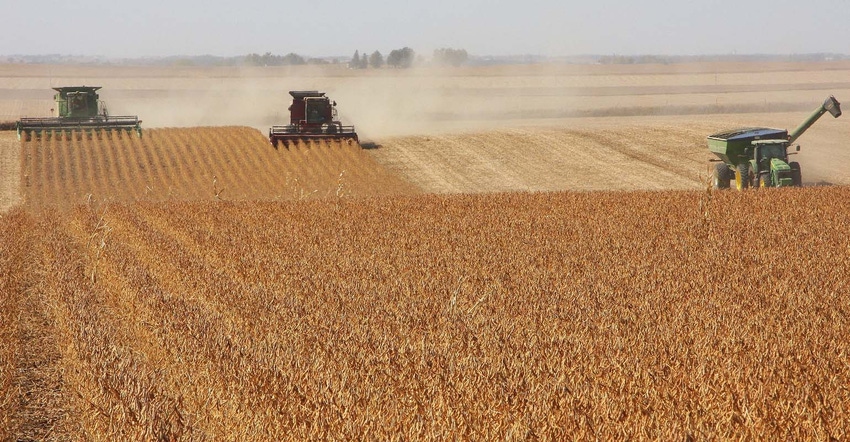
Your to-do list for today might look like this: Feed livestock, help get kids off to school, combine, drive the grain cart, run for parts, figure out meals for the family (and getting meals out to the field), pay bills, make sure to look at the markets! And SCENARIO PLAN!
In the hustle and bustle of harvest, we tend to run on all cylinders, not to mention more than a few cups of coffee! And, if I had to guess, I’d imagine that your to-do list might be three times as long as the list above, and just as you get one item crossed off, another is added on.
Since you have likely been busy with harvest, if you haven’t had a chance to notice, the grain markets remain in a holding pattern. Prices are consolidating, or trading in a range bound pattern, waiting for the freshest piece of news to dictate further direction.
Price breakout coming soon
With the USDA grain Quarterly Stocks report coming today, Sept. 30, consider the news the market needs to digest:
the U.S. debt ceiling situation
Chinese energy turmoil and Evergrande drama
mixed harvest yield results in the United States
inflation concerns
end of the third quarter position squaring for fund financial groups
new political leadership in Europe
La Nina gaining momentum to keep soils parched in South America
Currently theses bits of news have a nearly equal balance of bullish and bearish fundamentals. That is why commodity prices continue to remain “stuck” in a holding pattern. Which way will the pieces of news ultimately fall and tip the price scale? Will prices race higher due to lower supplies, a lower U.S. Dollar, strong demand, and adverse weather in South America? Or will a snafu in global economics spook prices lower?
My advice: Make a strategy that allows your farm to be prepared for either scenario. Don’t wait and see. Be ready to act on opportunity.
What’s your contingency plan?
As a marketer you gather information, and likely strategize that the market will trend in a particular price direction, and you create your marketing plan to act accordingly. For example, let’s say you have an order in with your elevator, that should new crop (Dec. 2022) cash corn trade at $5, you’ll sell 10,000 bushels. You feel good. You have a plan!
Suppose though, that your local cash market trades only up to $4.98, never hitting $5, and your order does not get filled.
Then, the market pushes lower. You have no contingency plan, the market goes the “wrong way,” and you have no plan in place to respond. You are left reeling and frustrated.
Good marketers have contingency plans in place, so they can act when they see opportunity or protect themselves against tumbling prices.
How does a marketer create a scenario plan?
It takes a well-balanced blend of fundamental analysis, knowing your local cash market, weighing both U.S. and global economic news, watching geo-political drama, understanding technical charts, and having discipline.
It may seem like a daunting task to learn how to scenario plan. However, the best of the best are already doing it. Scenario planning is the process of creating possible future outcomes: sharply higher markets, markets that stay low for two years at a time, markets that stay consistent, but inputs costs that might fluctuate drastically.
Manage through uncertainty
Scenario planning is forward thinking. It’s preparing your farm for the unthinkable.
I believe that markets will continue to be volatile in the coming years, and often times, better pricing opportunities arise when markets are uncertain, rather than when they are certain. That means you have to manage through uncertainty. You have to be ready with contingencies: sell, hedge, store, or whatever the appropriate action might be. At our firm, we call this Market Scenario Planning.
I don’t have to tell farmers how to manage through contingencies. You do it every day on your farm with your daily activities. Now you have a picture of how to apply that skill to commodity marketing. It’s what the best marketers will be doing in the year ahead.
Reach Naomi Blohm: 800-334-9779 Twitter: @naomiblohm and [email protected].
Disclaimer: The data contained herein is believed to be drawn from reliable sources but cannot be guaranteed. Individuals acting on this information are responsible for their own actions. Commodity trading may not be suitable for all recipients of this report. Futures and options trading involve significant risk of loss and may not be suitable for everyone. Therefore, carefully consider whether such trading is suitable for you in light of your financial condition. No representation is being made that scenario planning, strategy or discipline will guarantee success or profits. Any decisions you may make to buy, sell or hold a futures or options position on such research are entirely your own and not in any way deemed to be endorsed by or attributed to Total Farm Marketing. Total Farm Marketing and TFM refer to Stewart-Peterson Group Inc., Stewart-Peterson Inc., and SP Risk Services LLC. Stewart-Peterson Group Inc. is registered with the Commodity Futures Trading Commission as an introducing broker and is a member of National Futures Association. SP Risk Services, LLC is an insurance agency and an equal opportunity provider. Stewart-Peterson Inc. is a publishing company. A customer may have relationships with all three companies. SP Risk Services LLC and Stewart-Peterson Inc. are wholly owned by Stewart-Peterson Group Inc. unless otherwise noted, services referenced are services of Stewart-Peterson Group Inc. Presented for solicitation.
The opinions of the author are not necessarily those of Farm Futures or Farm Progress.
About the Author(s)
You May Also Like






